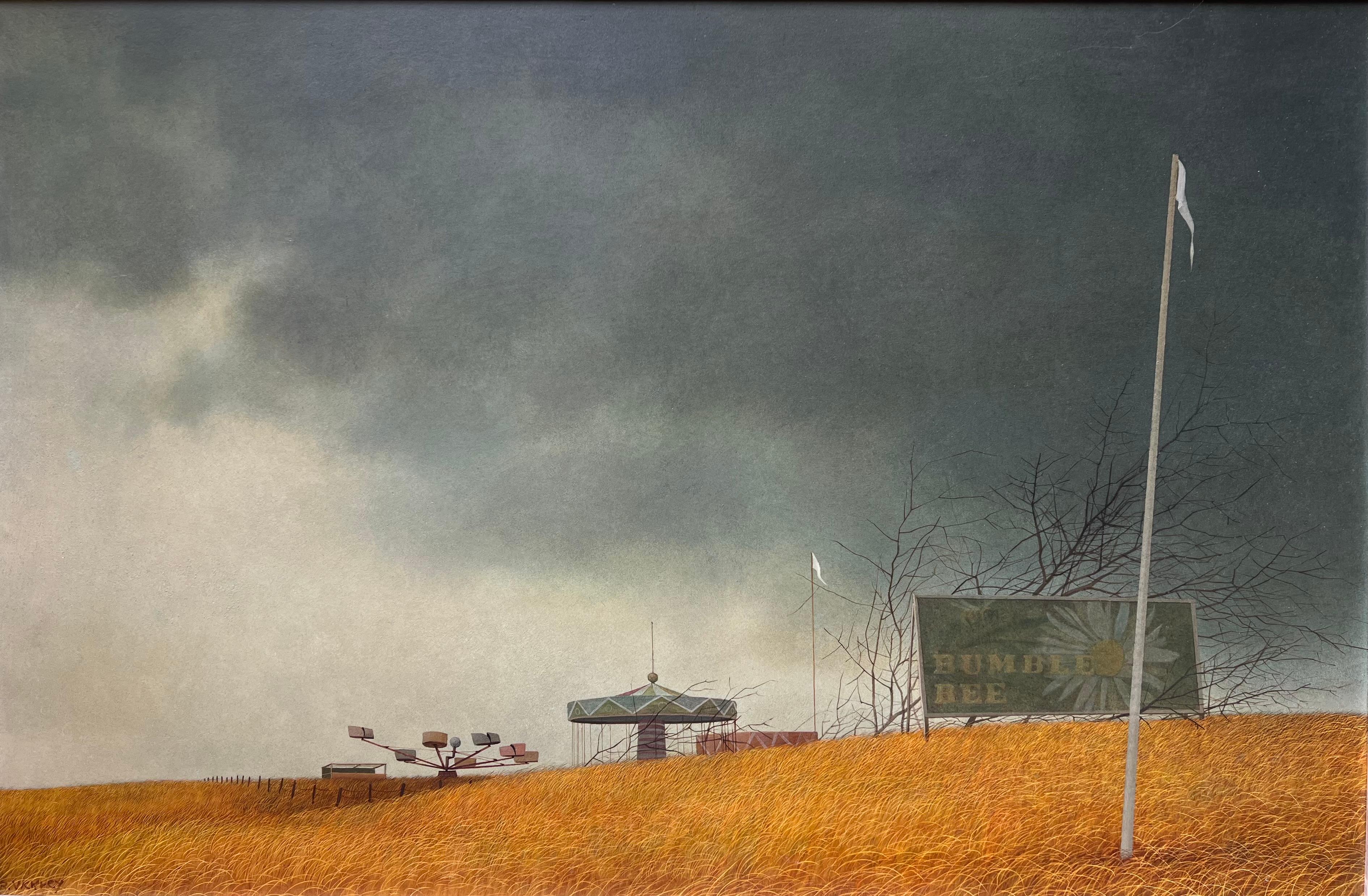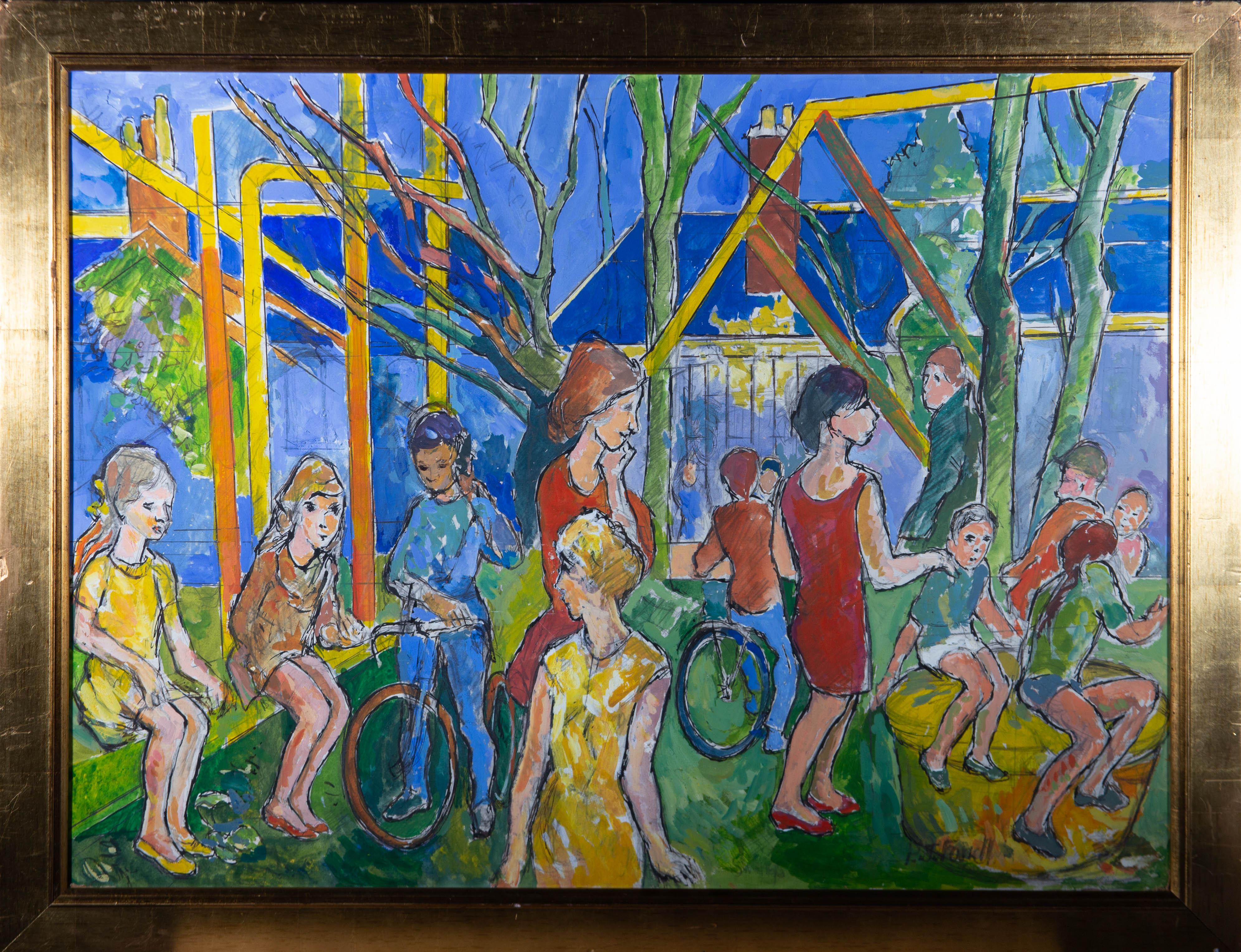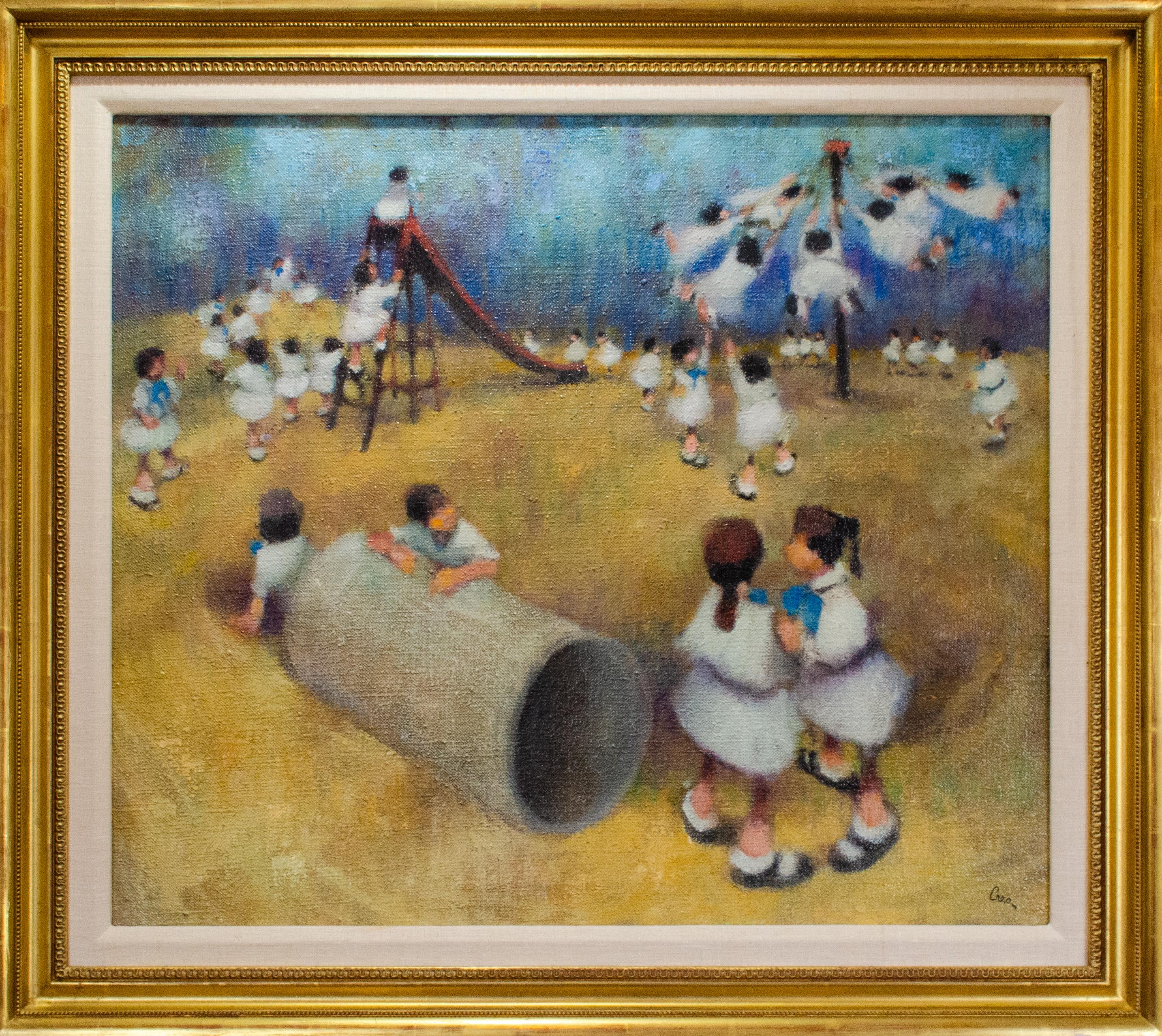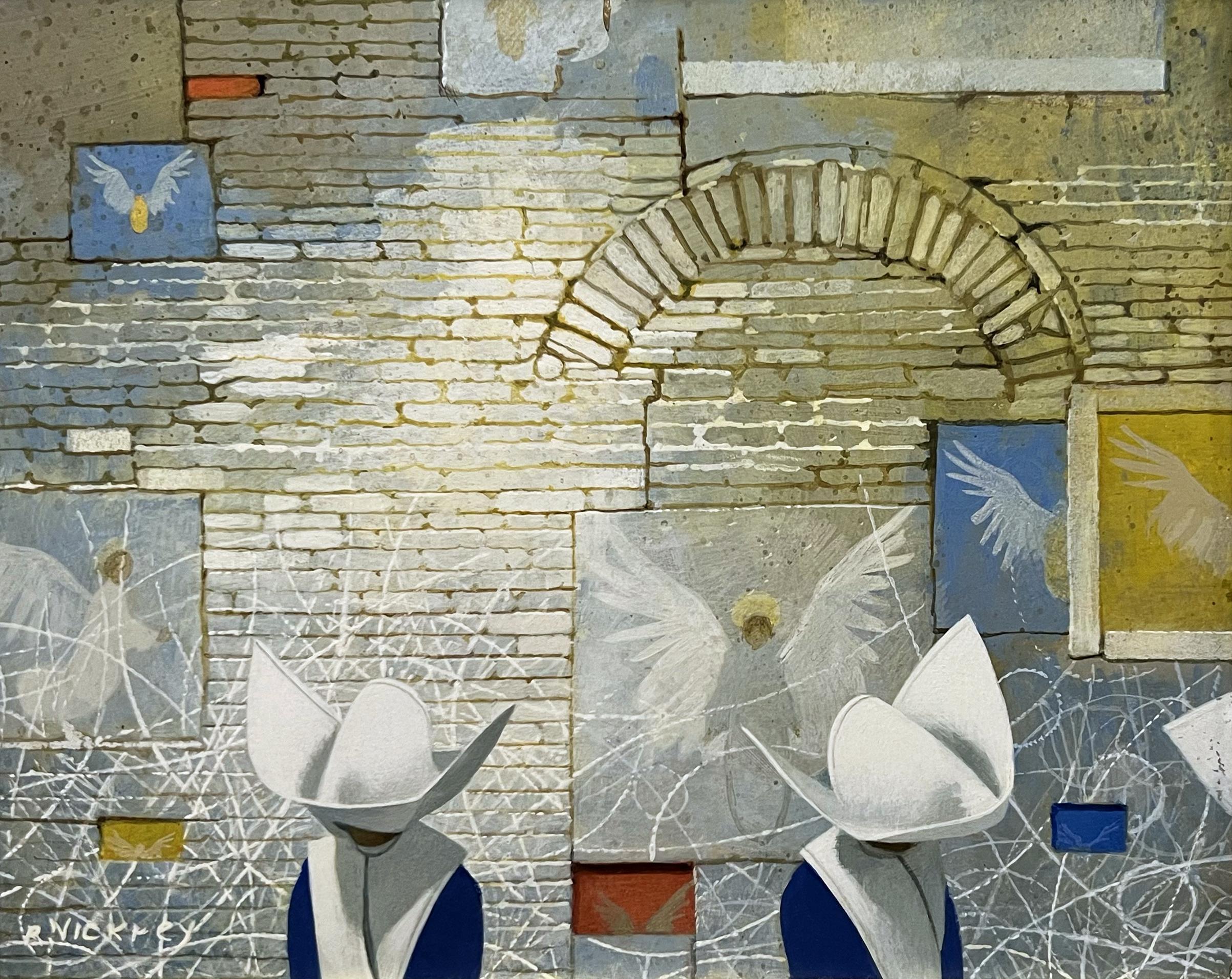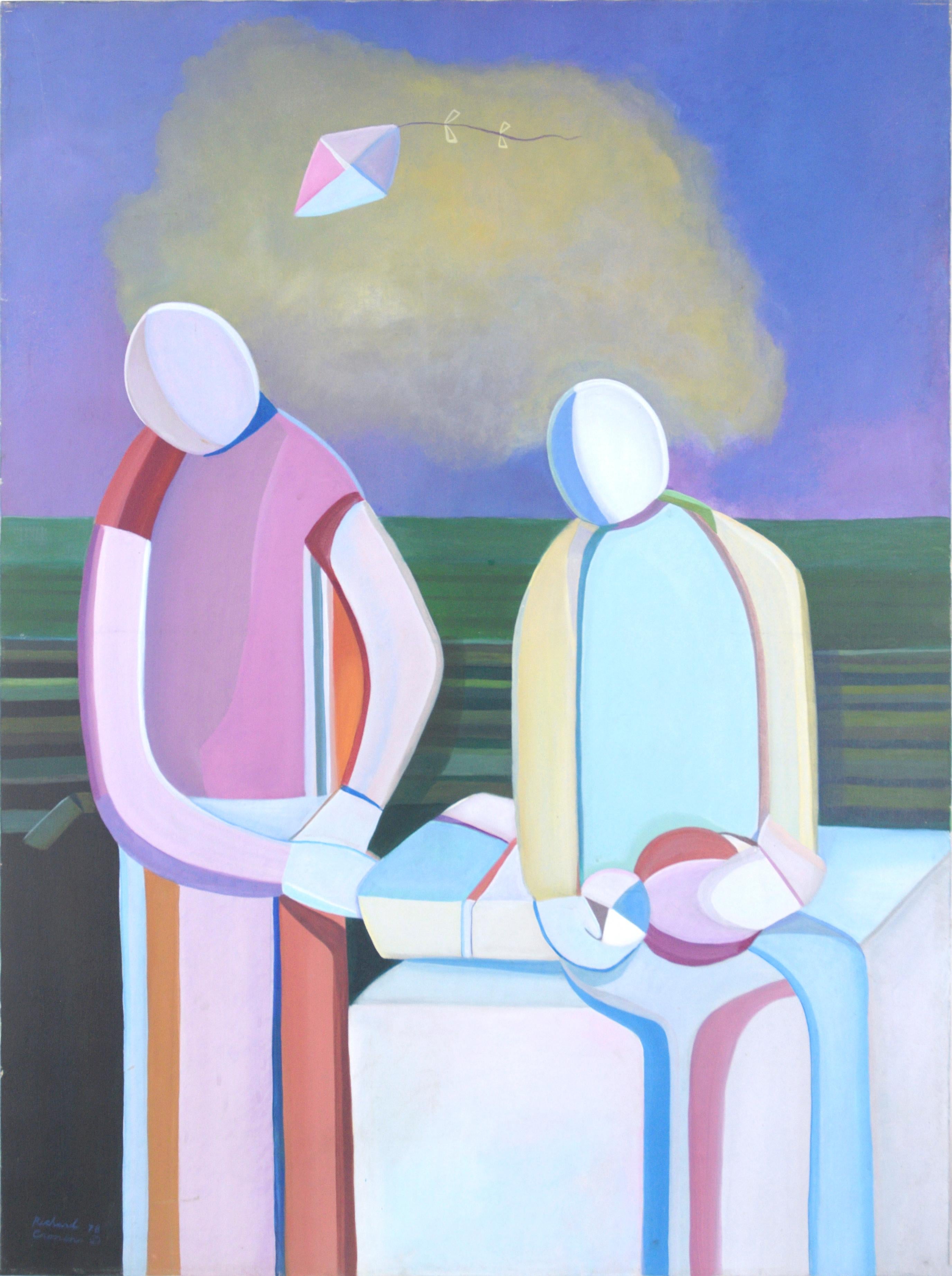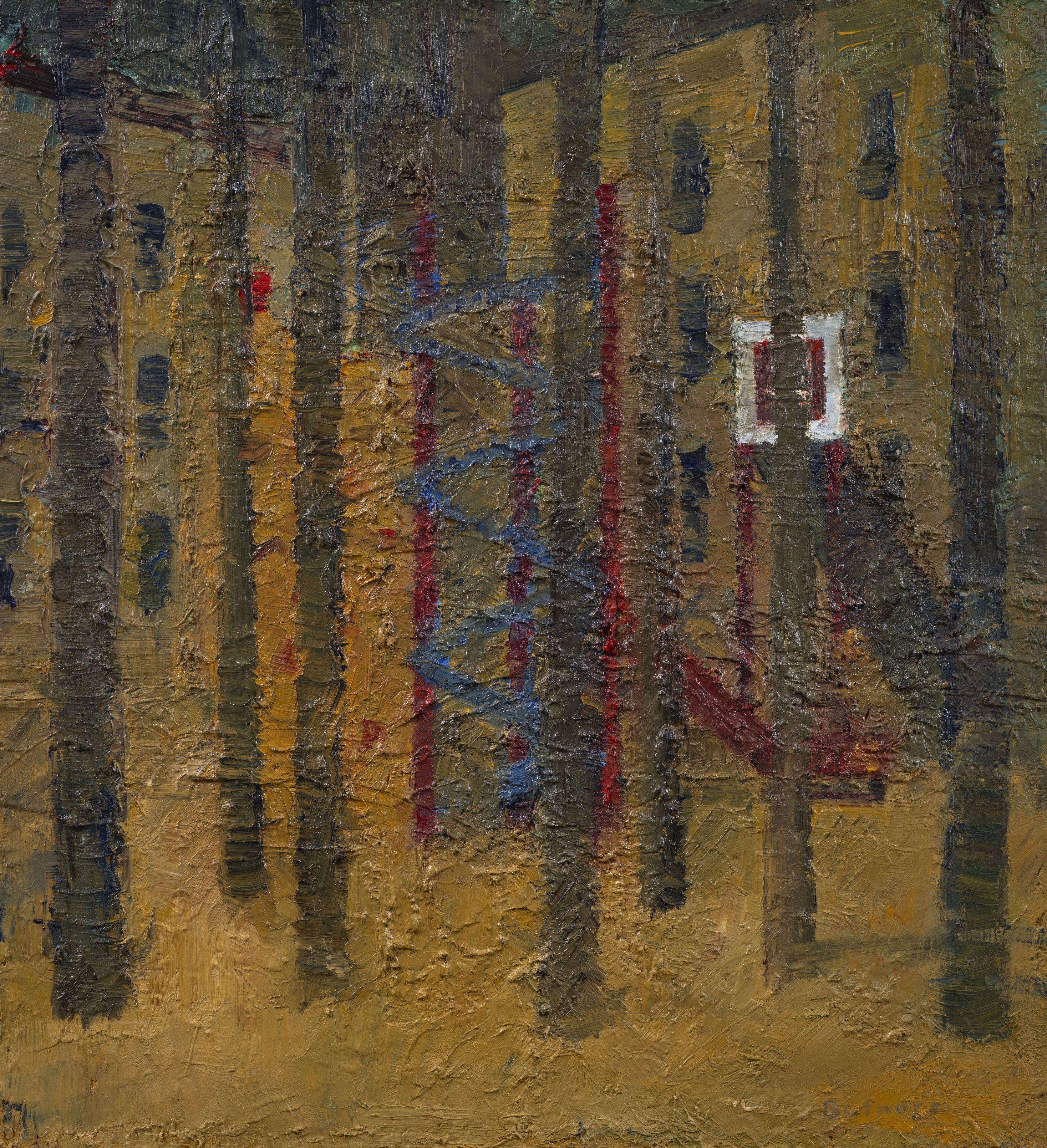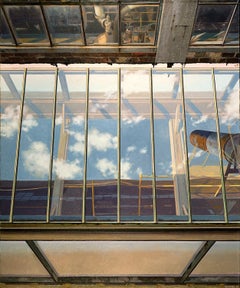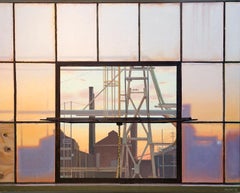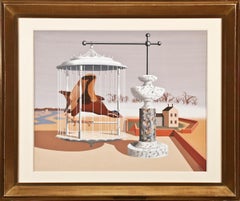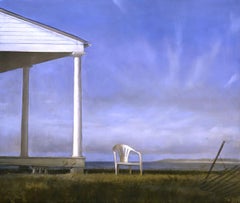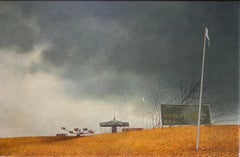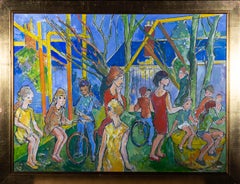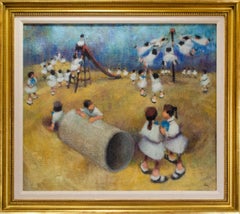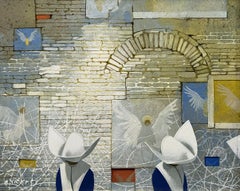Items Similar to Playground
Want more images or videos?
Request additional images or videos from the seller
1 of 8
Robert VickreyPlaygroundUnknown
Unknown
$42,500
£33,032.44
€37,664.52
CA$60,976.59
A$66,374.66
CHF 35,089.40
MX$802,548.17
NOK 439,881.38
SEK 411,728.24
DKK 281,187.22
About the Item
Signed (lower right): Robert Vickrey
- Creator:Robert Vickrey (1926 - 2011, American)
- Creation Year:Unknown
- Dimensions:Height: 30 in (76.2 cm)Width: 20 in (50.8 cm)
- Medium:
- Movement & Style:
- Period:
- Condition:
- Gallery Location:New York, NY
- Reference Number:Seller: M 018561stDibs: LU2310228882
About the Seller
5.0
Recognized Seller
These prestigious sellers are industry leaders and represent the highest echelon for item quality and design.
Established in 1952
1stDibs seller since 2010
35 sales on 1stDibs
Typical response time: 22 hours
Associations
Art Dealers Association of America
- ShippingRetrieving quote...Shipping from: New York, NY
- Return Policy
Authenticity Guarantee
In the unlikely event there’s an issue with an item’s authenticity, contact us within 1 year for a full refund. DetailsMoney-Back Guarantee
If your item is not as described, is damaged in transit, or does not arrive, contact us within 7 days for a full refund. Details24-Hour Cancellation
You have a 24-hour grace period in which to reconsider your purchase, with no questions asked.Vetted Professional Sellers
Our world-class sellers must adhere to strict standards for service and quality, maintaining the integrity of our listings.Price-Match Guarantee
If you find that a seller listed the same item for a lower price elsewhere, we’ll match it.Trusted Global Delivery
Our best-in-class carrier network provides specialized shipping options worldwide, including custom delivery.More From This Seller
View AllDistant Voices
By John Moore
Located in New York, NY
John Moore was born in St. Louis, MO in 1941. He received a BFA from Washington University in St. Louis (1966) and an MFA from Yale University (1968). Over a career spanning forty ye...
Category
2010s Contemporary Interior Paintings
Materials
Canvas, Oil
Sixth Hour
By John Moore
Located in New York, NY
Signed and dated (at lower right): MOORE '19
Category
2010s Contemporary Paintings
Materials
Canvas, Oil
$40,000
Bird in Cage
Located in New York, NY
Gouache on board, 20 x 24 in.
Signed (at lower right): Atherton
Painted about 1940
RECORDED: Art News (May 11, 1940), illus. [clipping citation]
EXHIBITED: The Art Institute of Chicago, 1940, The International Watercolor Exhibition, no. 156, illus. on cover as Bird in Cage...
Category
Mid-20th Century American Modern Landscape Paintings
Materials
Tempera, Wood Panel
Lookout
By Randall Exon
Located in New York, NY
Signed and dated (at lower left): Randall Exon 07
Category
21st Century and Contemporary Contemporary Landscape Paintings
Materials
Canvas, Oil
$18,000
Clearing
By John Moore
Located in New York, NY
John Moore was born in St. Louis, MO in 1941. He received a BFA from Washington University in St. Louis (1966) and an MFA from Yale University (1968). Over a career spanning forty ye...
Category
2010s Contemporary Interior Paintings
Materials
Canvas, Oil
$115,000
Excavation
By Charles Houghton Howard
Located in New York, NY
Charles Houghton Howard was born in Montclair, New Jersey, the third of five children in a cultured and educated family with roots going back to the Massachusetts Bay colony. His father, John Galen Howard, was an architect who had trained at M.I.T. and the École des Beaux Arts in Paris, and apprenticed in Boston with H. H. Richardson. In New York, the elder Howard worked for McKim, Mead and White before establishing a successful private practice. Mary Robertson Bradbury, Charles’s mother, had studied art before her marriage. John Galen Howard moved his household to California in 1902 to assume the position of supervising architect of the new University of California campus at Berkeley and to serve as Professor of Architecture and the first Dean of the School of Architecture (established in 1903). The four Howard boys grew up to be artists and all married artists, leaving a combined family legacy of art making in the San Francisco Bay area that endures to this day, most notably in design, murals and reliefs at the Coit Tower and in buildings on the Berkeley campus.
Charles Howard graduated from the University of California at Berkeley in 1921 as a journalism major, and pursued graduate studies in English at Harvard and Columbia Universities before embarking on a two-year trip to Europe. Howard went to Europe as a would-be writer. But a near-religious experience, seeing a picture by Giorgione in a remote town outside of Venice, proved a life-altering epiphany. In his own words, “I cut the tour at once and hurried immediately back to Paris, to begin painting. I have been painting whenever I could ever since” (Charles Howard, “What Concerns Me,” Magazine of Art 39, no. 2 [February 1946], p. 63). Giorgione’s achievement, in utilizing a structured and rational visual language of art to convey high emotion on canvas, instantly convinced Howard that painting, and not literature, offered the best vehicle to express what he wanted to say. Howard returned to the United States in 1925, confirmed in his intent to become an artist.
Howard settled in New York and supported himself as a painter in the decorating workshop of Louis Bouché and Rudolph Guertler, where he specialized in mural painting. Devoting spare time to his own work, he lived in Greenwich Village and immersed himself in the downtown avant-garde cultural milieu. The late 1920s and early 1930s were the years of Howard’s art apprenticeship. He never pursued formal art instruction, but his keen eye, depth of feeling, and intense commitment to the process of art making, allowed him to assimilate elements of painting intuitively from the wide variety of art that interested him. He found inspiration in the modernist movements of the day, both for their adherence to abstract formal qualities and for the cosmopolitan, international nature of the movements themselves. Influenced deeply by Surrealism, Howard was part of a group of American and European Surrealists clustered around Julien Levy. Levy opened his eponymously-named gallery in 1931, and rose to fame in January 1932, when he organized and hosted Surrealisme, the first ever exhibition of Surrealism in America, which included one work by Howard. Levy remained the preeminent force in advocating for Surrealism in America until he closed his gallery in 1949. Howard’s association with Levy in the early 1930s confirms the artist’s place among the avant-garde community in New York at that time.
In 1933, Howard left New York for London. It is likely that among the factors that led to the move were Howard’s desire to be a part of an international art community, as well as his marriage to English artist, Madge Knight...
Category
20th Century American Modern Abstract Paintings
Materials
Canvas, Oil
You May Also Like
Autumn Landscape
By Robert Vickrey
Located in Los Angeles, CA
Autumn Landscape, by 1958, tempera on Masonite, 24 x 36 inches, signed lower left, exhibited: 1) 133rd Annual Exhibition of the National Academy of Design, New York, NY, February 20 – March 16, 1958 (Henry Ward Ranger Purchase Prize); and 2) Henry Ward Ranger Centennial Exhibition, National Academy of Design, New York, NY, September 25 - October 12, 1958, #133 (see Levin, Meyer, Illustrative Paintings Gathered for Ranger Show at National Academy, St. Petersburg Times, October 13, 1958 (“There’s a warm, low-keyed picture of golden fields, with distant structures, called “Autumn Landscape,” by Robert Vickrey, whose magic realism is felt in so “regular” a subject.”), literature: 1) Watson, Ernest William, Composition in Landscape and Still Life, Watson-Guptill Publications, New York, 1959, pp. 24, 155 and 157 (illustrated); and 2) Vickrey, Robert and Cochrane, Diane, New Techniques in Egg Tempera, Watson-Guptill Publications, New York, 1973, p. 111 (illustrated); ex collection National Academy of Design
Reflecting on his art, Robert Vickery...
Category
1950s American Realist Landscape Paintings
Materials
Masonite, Egg Tempera
P. J. Farell - Contemporary Gouache, At The Playground
Located in Corsham, GB
A vibrant and busy gouache scene showing a busy playground filled with mothers and children. The children can be seen playing on roundabouts, with bikes and sitting chatting as the m...
Category
21st Century and Contemporary Figurative Drawings and Watercolors
Materials
Gouache
$378 Sale Price
20% Off
Original Leonard Creo Painting of Children on a Playground
Located in New York, NY
Leonard Creo (American, 1923-2019)
Untitled (Children on a Playground), c. 20th century
Oil on canvas
27 x 30 in.
Framed: 32 1/4 x 35 3/4 in.
Signed lowe...
Category
20th Century Modern Figurative Paintings
Materials
Canvas, Oil
Exaltation of Angels
By Robert Vickrey
Located in Rancho Santa Fe, CA
Signed lower right: "R. Vickery"
Provenance:
Harmon-Meek Gallery, Naples, FL
This item is in our New York City warehouse and can be viewed by appointment.
Category
Early 2000s Contemporary Figurative Paintings
Materials
Egg Tempera, Panel, Gesso
Day at the Park - Surreal Figurative
Located in Soquel, CA
Bold figurative work by Richard Cronin (American, b. 1952). Two figures are at the edge of the sea, one of which is seated and holding two beach balls. ...
Category
1970s American Modern Figurative Paintings
Materials
Canvas, Oil
$1,720 Sale Price
20% Off
Playground. 2023, oil on canvas, 59x54 cm
Located in Riga, LV
Playground
2023, oil on canvas, 59x54 cm
Ansis Butnors (1977)
Education:
J. Rozentals Art School in Riga – 1989. – 1996.
Latvian Academy of Art, Painting Department – 1996. – 200...
Category
2010s Modern Landscape Paintings
Materials
Canvas, Oil
$1,634 Sale Price
20% Off
More Ways To Browse
Vintage Playground
Large Scale Paintings
Portrait Of A Woman
Oil Painting Oranges
19th Century Original Oil Paintings
New Orleans Art
Framed Nude
21st Century Modern Paintings
Used Paint Brushes
Small Painting Of A Tree
1950 Oil Paintings
Large Antique Oil Painting Framed Paintings
Custom Vintage Frames
White Acrylic Painting
Green And Blue Flower Art
Canadian Artist
Maier Paintings
Red White And Blue Abstract
